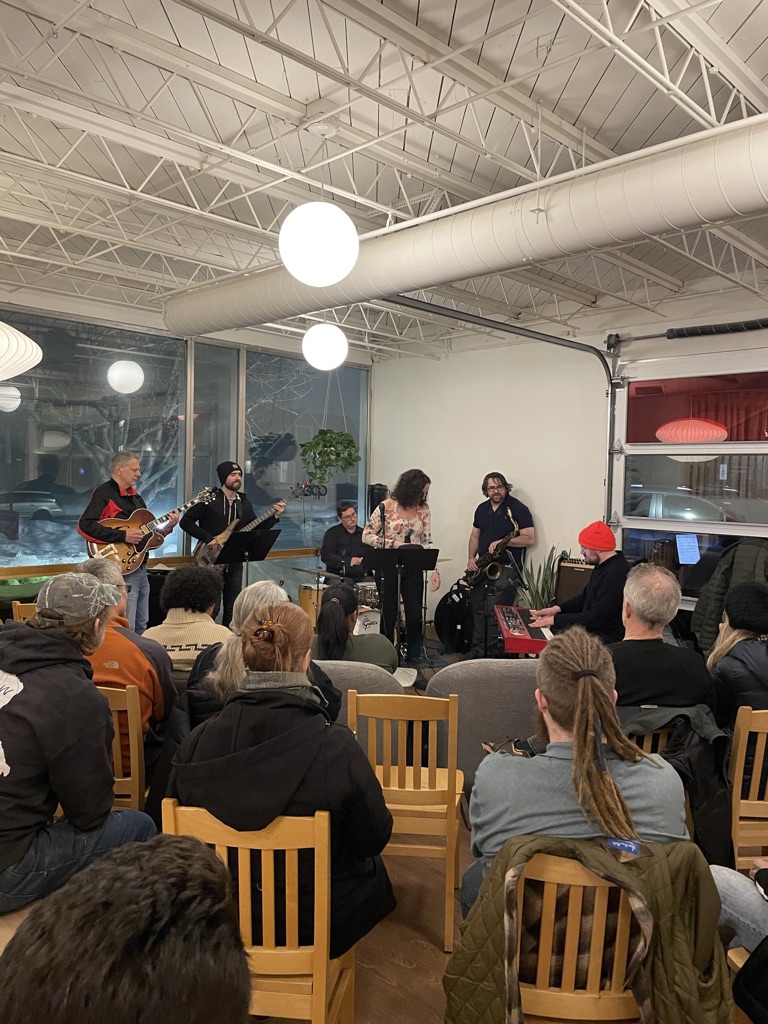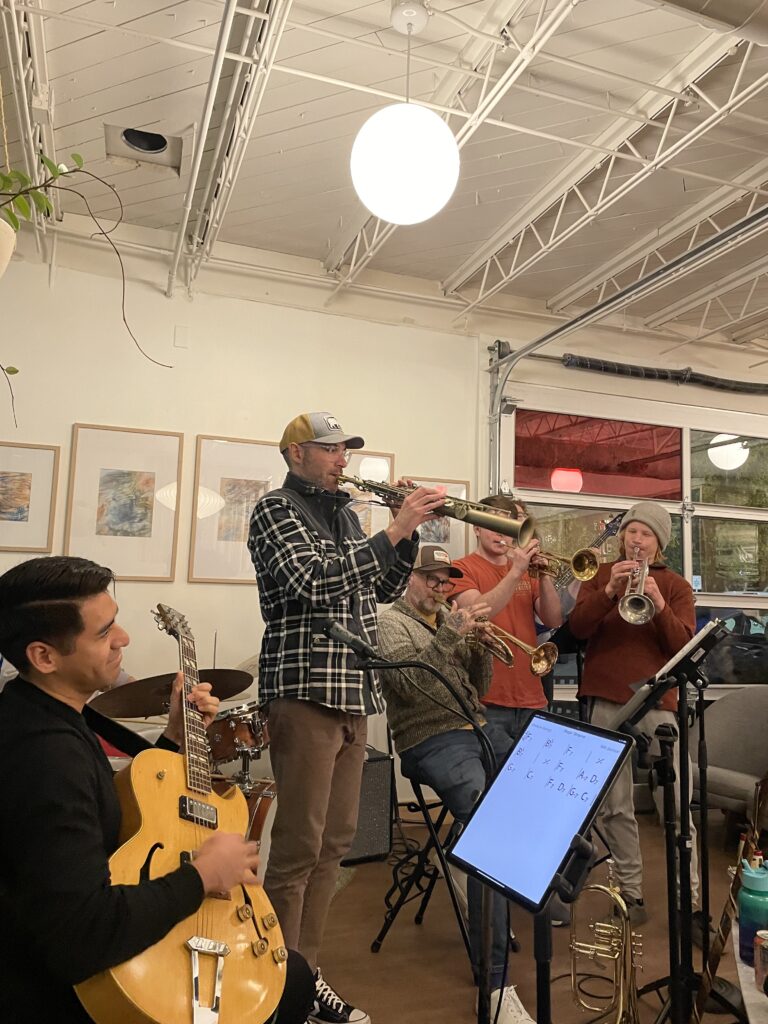Here are some quick pointers for beginners:
- It’s not a bad idea to come watch and listen once or twice, to get the lay of the land.
- Leave your cases where they’re not taking up seating.
- Tuning matters, a lot! Ask for a tuning note.
- Be conscientious of volume, especially if you’re playing through an amp.
- When you come up to play, be ready to call a tune you have prepared and feel comfortable performing.
- If you’re not familiar with a tune, don’t feel compelled to play on it. It’s better to wait for a tune you feel more confident about. Remember the name of the tune you didn’t know and learn it!
- Be conscious of the lengths of your solos. See below for some more specific guidelines.
- If you’re lost on the form, let someone know so they can show you where are you are in the tune and help you get out of your solo. Don’t just keep going because you don’t know where the form ends.
- Consider standing aside during rhythm section solos if you are obscuring the person soloing, especially the drummer. Let the audience see the soloist perform.
- Keep an eye out for when it’s time to come back in with the head.
- Connect with the other players visually when ending tunes, this will increase the odds of a safe landing.
Elaborated thoughts on etiquette~
Music is a complex social behavior, and the culture of open sessions varies across traditions and geographies. When I travel and attend a session in another country or even another city, I often don’t play the first time I go. Even as a well-versed professional player, I observe before I get involved. If I’m only there for a one-time visit and I have an instrument with me, I’ll probably watch for at least a set and get a sense of the level of musicianship, the leadership dynamics, the repertoire, and even the personalities in the room before I volunteer to participate. I’ll call an accessible tune that seems like it will work well in the context.
If you’re a musician but you have little to no experience in jazz, it wouldn’t be a bad idea to attend once or twice to just watch and listen, and maybe write down titles of some tunes to work on at home. When we invite someone up to play, I usually ask what they’d like to play. Depending on who I’m asking, that question could translate to “hi, nice to meet you, do you know how this works, and do you know any jazz tunes?” or “what are you comfortable with?” or, “hi old buddy, what have you been working on lately?” So, whatever your level of experience, being ready to call a tune is important.
When you do sit in, please be conscientious about sharing time. The greatest challenge in running a successful session is balancing inclusivity with assuring a level of performance quality. To be candid, when relative beginners are staying up for a long time and the more seasoned players in the room are sitting on sidelines, the energy dissipates. When the pros play a lot and get warmed up, the excitement builds, the session “cooks,” so to speak, and everyone has a more exciting experience, and a superior learning experience.
The most important aspect of session etiquette is managing solo lengths. You’re at the session to learn by getting stage time, but you learn as much or more from watching and listening to other players. Make sure you’re leaving others plenty of space! Here are some specific guidelines on solo lengths (not rules, suggestions):
If it’s a full house and there are a lot of people there to play, one form on a thirty-two-bar tune is a good guideline, two or three choruses on a blues. If it’s a slow night, two forms on a thirty-two-bar tune and maybe four or five forms on a blues is probably alright. On long form tunes and ballads, splitting up the form between soloists can help keep tunes a bit shorter and keep the momentum of the session lively. Read the room and notice that the pros in the room mostly proportion their solos as described above when they’re at a session. They undoubtedly play much longer solos at their gigs and on their records, but at the session, they’re attuned to sharing the time with each other. They want to listen to other people’s ideas as much or more than they want to play their own.
Volume is another important consideration, especially when playing through an amplifier. I often run my guitars and basses sagged to about 7 or 8 on the volume knob, because it mellows the tone. If the person sitting in runs my instrument or their instrument wide open at 10 and doesn’t adjust the volume on the amp, the dynamic balance can become skewed and other musical fundamentals (pocket, form, etc.) go down like dominoes. Notice that when the music is at its best, everyone is creating a great mix together, each minding their own fader. Potentiometers are quite useful, but your first gain stages are your ears and your fingers.
Have fun. Work on your craft Be humble and confident. Have a great vibe, and your life will be full of friends and likeable gigs!!


